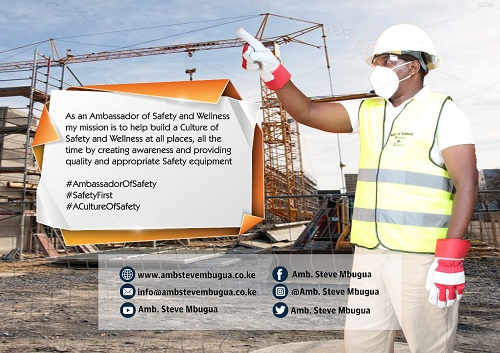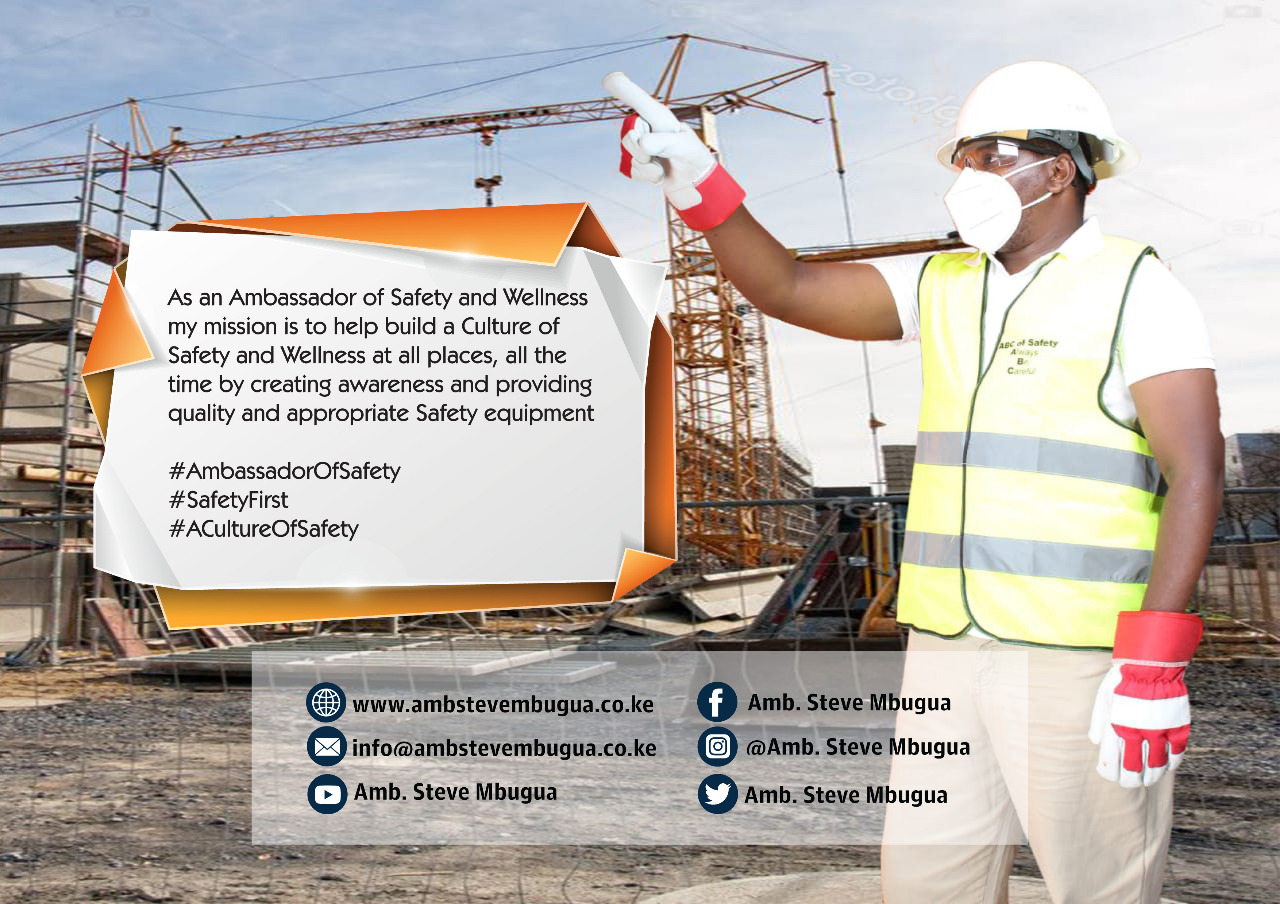Environmental safety is a crucial aspect of ensuring the health and well-being of both people and the planet. As Ambassador Steve Mbugua, the globally recognized Ambassador of Safety, I am dedicated to promoting environmental safety standards and sustainable practices. In this article, we explore key strategies for enhancing environmental safety, including pollution control, sustainable resource management, waste reduction, and environmental risk assessments. By prioritizing environmental safety, we can protect ecosystems, prevent harm to human health, and create a sustainable future. Let us delve into the essential components of effective environmental safety management and work towards preserving our environment for future generations.
Environmental safety encompasses a wide array of practices, policies, and regulations aimed at protecting human health and the natural environment from potential hazards. This includes ensuring compliance with environmental laws, implementing pollution prevention measures, and promoting sustainable practices across various industries. Here’s a detailed exploration of environmental safety:
Introduction to Environmental Safety
Environmental safety focuses on preventing harm to human health and ecosystems by minimizing risks associated with pollutants, hazardous materials, and unsafe practices. It involves proactive measures to identify, assess, and mitigate environmental hazards in industrial, commercial, residential, and public settings.
Different Accidents, Incidents, Illnesses, and Near Misses Relating to Environmental Safety
1. Chemical Spills: Accidental releases of hazardous substances into the environment, posing risks to soil, water, and air quality.
2. Air Pollution: Emissions from industrial processes, vehicles, and burning fuels leading to respiratory illnesses and environmental degradation.
3. Water Contamination: Chemical runoff, sewage leaks, and improper waste disposal contaminating water sources and aquatic habitats.
4. Soil Contamination: Industrial waste disposal, improper pesticide use, and landfill leaks affecting soil fertility and groundwater quality.
5. Oil Spills: Accidental discharge of oil into water bodies, impacting marine life, ecosystems, and coastal communities.
6. Radiation Exposure: Accidents in nuclear facilities or medical radiation sources leading to radiation leaks and health risks.
7. Noise Pollution: Excessive noise from industrial operations, transportation, or construction sites affecting human health and wildlife.
8. Solid Waste Hazards: Improper disposal of solid waste leading to littering, habitat destruction, and pest infestations.
9. Natural Disasters: Environmental emergencies such as floods, hurricanes, or earthquakes causing widespread damage and environmental risks.
10. Wildlife Encounters: Human-wildlife conflicts due to habitat destruction, illegal hunting, or wildlife trafficking.
11. Climate Change Impacts: Extreme weather events, sea-level rise, and temperature shifts affecting ecosystems and communities.
12. Erosion and Land Degradation: Soil erosion, deforestation, and unsustainable land use practices leading to ecosystem destabilization.
Latest Trends in Environmental Safety
1. Sustainable Practices: Adoption of renewable energy, resource efficiency, and eco-friendly technologies to reduce environmental impact.
2. Circular Economy: Minimizing waste generation through recycling, reuse, and responsible product lifecycle management.
3. Climate Adaptation Strategies: Building resilience to climate change impacts through urban planning, infrastructure upgrades, and ecosystem restoration.
4. Green Building Certifications: Designing and constructing buildings with energy-efficient systems, water conservation measures, and sustainable materials.
5. Environmental Management Systems (EMS): Implementing ISO 14001 standards for systematic environmental management and continuous improvement.
6. Pollution Prevention Programs: Strategies to minimize pollution at the source through cleaner production methods and waste reduction initiatives.
7. Biodiversity Conservation: Habitat restoration, protected area management, and species conservation efforts to preserve biodiversity.
8. Environmental Impact Assessments (EIA): Evaluating potential environmental effects of proposed projects and development activities.
9. Carbon Footprint Reduction: Measuring, reporting, and reducing greenhouse gas emissions through carbon accounting and offsetting initiatives.
10. Water Conservation: Efficient water use practices, rainwater harvesting, and wastewater treatment technologies to conserve freshwater resources.
11. Environmental Justice Initiatives: Addressing disparities in environmental burdens and ensuring equitable access to a safe and healthy environment.
12. Public Awareness Campaigns: Educating communities about environmental issues, sustainable lifestyles, and responsible environmental stewardship.
Environmental Safety Audits and Inspections
1. Regulatory Compliance Audits: Assessing adherence to environmental laws, permits, and regulatory requirements.
2. Pollution Control Inspections: Monitoring emissions, effluents, and waste management practices to prevent environmental contamination.
3. Site Assessments: Evaluating potential environmental hazards, contamination risks, and remediation requirements.
4. Hazardous Materials Management: Inspecting storage, handling, and disposal practices for hazardous chemicals and materials.
5. Erosion and Sediment Control: Assessing erosion prevention measures, sedimentation ponds, and stormwater management systems.
6. Air Quality Monitoring: Measuring pollutants, particulate matter, and volatile organic compounds (VOCs) in ambient air.
7. Water Quality Sampling: Testing water bodies for pollutants, nutrients, heavy metals, and microbial contamination.
8. Ecological Assessments: Studying biodiversity, habitat conditions, and ecosystem health in natural and urban environments.
9. Waste Audits: Analyzing waste streams, recycling rates, and waste reduction initiatives in industrial and commercial operations.
10. Environmental Health Reviews: Assessing impacts of environmental factors on human health, including exposure to toxins and pollutants.
11. Emergency Response Drills: Simulating environmental emergencies such as chemical spills or natural disasters to test response readiness.
12. Environmental Compliance Certifications: Obtaining certifications and endorsements demonstrating commitment to environmental responsibility.
Environmental Safety Training Programs
1. Hazardous Materials Handling: Training on safe storage, transportation, and disposal of hazardous chemicals and substances.
2. Emergency Response Training: Preparedness for environmental emergencies, including spill response, evacuation procedures, and first aid.
3. Environmental Legislation: Education on local, state, and federal environmental laws, regulations, and compliance requirements.
4. Pollution Prevention Practices: Techniques for reducing emissions, effluents, and environmental impacts through best practices.
5. Environmental Management Systems (EMS): Training on implementing and maintaining ISO 14001 standards for environmental management.
6. Eco-friendly Practices: Promoting sustainable behaviors, energy conservation, and resource efficiency in daily operations.
7. Climate Change Mitigation: Strategies for mitigating greenhouse gas emissions, adapting to climate impacts, and promoting resilience.
8. Ecological Conservation: Understanding biodiversity, habitat preservation, and ecosystem restoration principles.
9. Environmental Monitoring: Techniques for monitoring air quality, water quality, soil health, and ecological indicators.
10. Waste Management: Education on waste reduction, recycling, composting, and proper waste disposal practices.
11. Environmental Risk Assessment: Methods for assessing environmental risks, conducting impact assessments, and implementing mitigation measures.
12. Community Engagement: Involving stakeholders in environmental initiatives, fostering partnerships, and promoting environmental stewardship.
Environmental Safety Installations and Practices
1. Pollution Control Equipment: Installing air pollution control devices, wastewater treatment systems, and filtration technologies.
2. Environmental Monitoring Systems: Sensors, meters, and monitoring equipment for real-time data collection on environmental parameters.
3. Green Infrastructure: Designing urban landscapes with green roofs, permeable pavements, and natural stormwater management features.
4. Renewable Energy Systems: Solar panels, wind turbines, and geothermal systems for sustainable energy generation and carbon footprint reduction.
5. Water Conservation Measures: Low-flow fixtures, rainwater harvesting systems, and irrigation efficiency improvements.
6. Natural Habitat Preservation: Conservation easements, wildlife corridors, and protected areas to preserve biodiversity and ecological balance.
7. Emergency Response Equipment: Spill containment kits, personal protective equipment (PPE), and emergency response vehicles.
8. Environmental Compliance Signs: Posting signs, labels, and warnings for hazardous areas, waste disposal instructions, and environmental hazards.
9. Erosion Control Structures: Terracing, riprap, and vegetation buffers to prevent soil erosion and sedimentation in sensitive areas.
10. Sustainable Land Use Planning: Zoning regulations, land development guidelines, and green building codes to promote eco-friendly development.
11. Environmental Remediation Technologies: Soil vapor extraction, bioremediation, and phytoremediation for cleaning up contaminated sites.
12. Environmental Certification Standards: Achieving LEED certification, Green Seal, or other environmental performance standards demonstrating commitment to sustainability.
Environmental safety is crucial for safeguarding human health, preserving natural resources, and promoting sustainable development. By integrating best practices, technology, and regulatory compliance, organizations can mitigate environmental risks, enhance operational efficiency, and contribute to a healthier planet. Continuous education, innovation, and stakeholder engagement are essential for addressing evolving environmental challenges and ensuring a resilient future for communities worldwide.
In conclusion, environmental safety is a vital element of global sustainability that requires proactive measures and collaborative efforts. As the Ambassador of Safety, I have emphasized the importance of implementing pollution control, sustainable resource management, and comprehensive risk assessments. By adopting these strategies, we can safeguard natural ecosystems, protect human health, and ensure a sustainable future for all. Let us commit to championing environmental safety and work together to create a world where environmental stewardship and safety are paramount. Embracing these practices not only preserves our planet but also enhances the quality of life for current and future generations.
READ MORE
Workplace Safety Video
Conducting Safety Workshops
Largest Safety Company
Building A Culture OF Safety
Personal Safety and Security



















